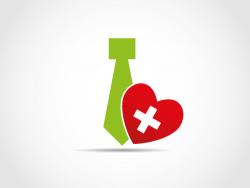When you consider America’s most dangerous careers, your reaction is probably to think of first responders like police officers and firefighters. Maybe aircraft pilots come to mind. What you may not be aware of is that medical professionals — doctors, nurses, technicians, surgeons and mental-health providers alike — also put their lives on the line on a regular basis to perform their basic job functions.
What can be so deadly about working in the health care profession?
When you consider America’s most dangerous careers, your reaction is probably to think of first responders like police officers and firefighters. Maybe aircraft pilots come to mind. What you may not be aware of is that medical professionals — doctors, nurses, technicians, surgeons and mental-health providers alike — also put their lives on the line on a regular basis to perform their basic job functions.
What can be so deadly about working in the health care profession?
The truth is that medical personnel face all sorts of occupational hazards that tend to fall under the radar, often hiding from the professionals themselves. Especially if you practice in the health care industry or aspire to a career in the field, it is imperative to acknowledge these dangers so you can strive to avoid them. After all, you can’t do much to save your patients’ lives if you’re not equally focused on saving your own.
From physical and biological hazards to chemical risk factors, here are five hidden dangers you might find yourself experiencing as a health care professional.
1. Needle Stick Injuries
In the year 2000, U.S. Congress passed the Needlestick Safety and Prevention Act to ensure a higher safety standard on medical equipment. Nevertheless, according to the Occupational Health and Safety Administration (OHSA), approximately 5.6 million health care workers are at risk for accidental needle sticks.
These accidental pricks, which affect primarily nurses prior to or during needle disposal in the operating room, can lead to a variety of bloodborne illnesses including Human Immunodeficiency Virus (HIV), Hepatitis B Virus (HBV) and Hepatitis C Virus (HCV).
The Solution: Despite the OHSA’s reports that more than 385,000 accidental sticks occur every year, the Department of Health and Human Services claims that nearly 50 percent of these incidents go unreported. Organizations like the Food and Drug Administration (FDA), the National Institute for Occupational Safety and Health (NIOSH), the Centers for Disease Control (CDC) and the OHSA are pushing for safer equipment, but better reporting — and thus better tracking — are necessary to ensure that their recommendations will be followed.
In the meantime, if you do find yourself the victim of an accidental poke, advanced medical techniques such as post-exposure prophylaxis (PEP) administration can reduce your risk of HIV exposure by up to 72 percent.
2. Infection From Bodily Fluids
Needle sticks aren’t the only way to become infected with blood borne pathogens like HIV or hepatitis viruses. As a medical professional, you’re probably well accustomed to handling bodily secretions — blood, urine, semen and vaginal fluid, to name a few — on a fairly regular basis.
If your patient is the carrier of an infectious disease or has a high viral load, you run the risk of contracting the disease yourself through mucous membranes (via splashes into the eyes, nose or mouth) or non-intact skin exposure, especially if you already have an open wound you may not even know about (as small as a cut on the tip of your finger).
The Solution: According to experts, most exposures to bodily secretions occur when medical personnel do not properly follow standard precautions and procedures, which include using personal protective equipment (PPE) at all times. Always wear gloves when handling bodily fluids and safety glasses in the operating room to protect your eyes from splashes.
If you do experience an accidental splash, clean the area with soap, water and sterile irrigants immediately. Then make sure you report the injury and seek medical evaluation.
3. Smoke Plume Inhalation
Even if you’re exceedingly cautious when handling needles and bodily fluids, you’re not immune to occupational hazards of the medical field. Especially if you spend any significant time in the operating room, you’ve probably been exposed to surgical smoke plume.
Smoke plume, used in approximately 95 percent of surgical procedures, is a harmful byproduct of lasers, surgical pencils, ultrasonic equipment and other energy-creating devices. Smoke plumes, including Bovie smoke from electrosurgical units, are extremely carcinogenic due to their mutagenic chemical properties. They are also capable of causing inflammatory or allergic reactions, including headaches and nausea, in sensitive individuals. A recent study reported that one day in the operating room with smoke plume was the equivalent of exposure to 27 to 30 cigarettes. In addition, smoke plume has been demonstrated to be capable of carrying bacteria such as Staphylococcus aureus and Bacillus subtilis and can linger for 20 minutes in an operating room before ventilation systems return particulate concentrations to baseline level.
The Solution: The NIOSH, among other health and safety organizations, recommends that operating rooms implement sophisticated evacuator systems that filter out the toxic components of the smoke plume, minimizing exposure and health risks to patients and hospital staff alike. Additionally, an evacuator nozzle should be kept within close proximity to the surgical site to ensure effective capture of airborne contaminants.
On an individual level, though, if you regularly spend time around such inhalants, you can protect yourself from large, dangerous particles by always wearing a surgical mask in the operating room.
4. Physical Violence
No matter what your role in the health care industry, if you’ve worked in the business for long enough, chances are you’ve witnessed some occupational violence — and not necessarily from your co-workers.
From patients with severe forms of mental illness or substance abuse problems to the elderly and their distressed caregivers, health care settings across the board are becoming more and more susceptible to violence and aggression. In 2014, for example, three out of four nurses reported being the victims of physical or verbal abuse by their own patients or visitors. Professionals who work in the mental health sector, such as psychiatrists, are often even more at risk of facing violence. In one national survey of psychiatrists, the rate of violence was 40 percent over the span of their medical career.
The Solution: While patient aggression due to mental illness or other factors may be an inevitability, psychiatrists and other clinicians can minimize harm by conducting a careful risk assessment before exercising judgment about the best course of action for treatment. Patients who are severally mentally ill or have a history of violent behavior or substance abuse may respond better to an inpatient setting, under careful observation, than to a casual outpatient setting.
As a health care practitioner, you can also participate in training to help you recognize the warning signs of escalating violence, such as increased agitation, invasion of personal space and verbal threats. If there’s any doubt about your physical safety in the presence of a severally ill patient, have a professional third party with you during evaluation and treatment.
5. Long Hours and Occupational Burnout
It’s not uncommon for medical professionals, especially nurses, doctors and physician assistants, to work a 12-or-more-hour shift on a regular basis. After all, even after you’ve finished with your last patient, you probably have charting and other documentation to do before you can actually leave the hospital or other health care setting.
But research shows that, particularly among nurses, the longer the shift, the greater the risk of burnout and job dissatisfaction. A recent survey found that hospital nurses who work shifts of 10 hours or more are two and a half times more likely to report these negative feelings toward their occupation and to quit their job than those with shorter shifts. In addition to mental burnout and fatigue, long shift hours take a physical toll on the bodies of medical professionals, leading to painful and chronic conditions such as aching feet and back strain.
These grueling shifts have implications for patient safety, too — in the same survey of hospital nurses and health care outcomes, patients’ satisfaction with their medical treatment was adversely affected by longer shift hours.
The Solution: At least for physicians, the Accreditation Council for Graduate Medical Education has placed mandatory restrictions on hours worked per week, limiting them to no more than 80. Many researchers and policy workers are encouraging other accrediting boards, such as the Joint Commission, to impose similar restrictions for nurses and allied health care workers. Currently, the American Nurses Association (ANA) supports a more flexible culture by encouraging employers to allow nurses to leave at the end of 12-hour shifts, rather than staying for staff meetings, and to take frequent breaks from patients during the day to minimize fatigue and strain.
In the meantime, if you find that taking on long, stressful shifts is out of your control, practice self-care by making the most of your free time away from work. The occasional deep-tissue massage can work wonders to soothe those aching feet and sore back muscles. Other activities that have been effective in minimizing burnout include yoga, Tai Chi, music therapy, mindfulness meditation and even a peaceful nature walk.
Regardless of whether you’ve been in the health care industry for decades or you’re still a student with aspirations to heal the world, knowledge is power in any field, and it’s important to remain cognizant of occupational hazards. By maintaining awareness of the dangers you may face on a daily basis in the medical setting, you can follow best practices to reduce the risk that you’ll transition from practitioner to patient yourself.







